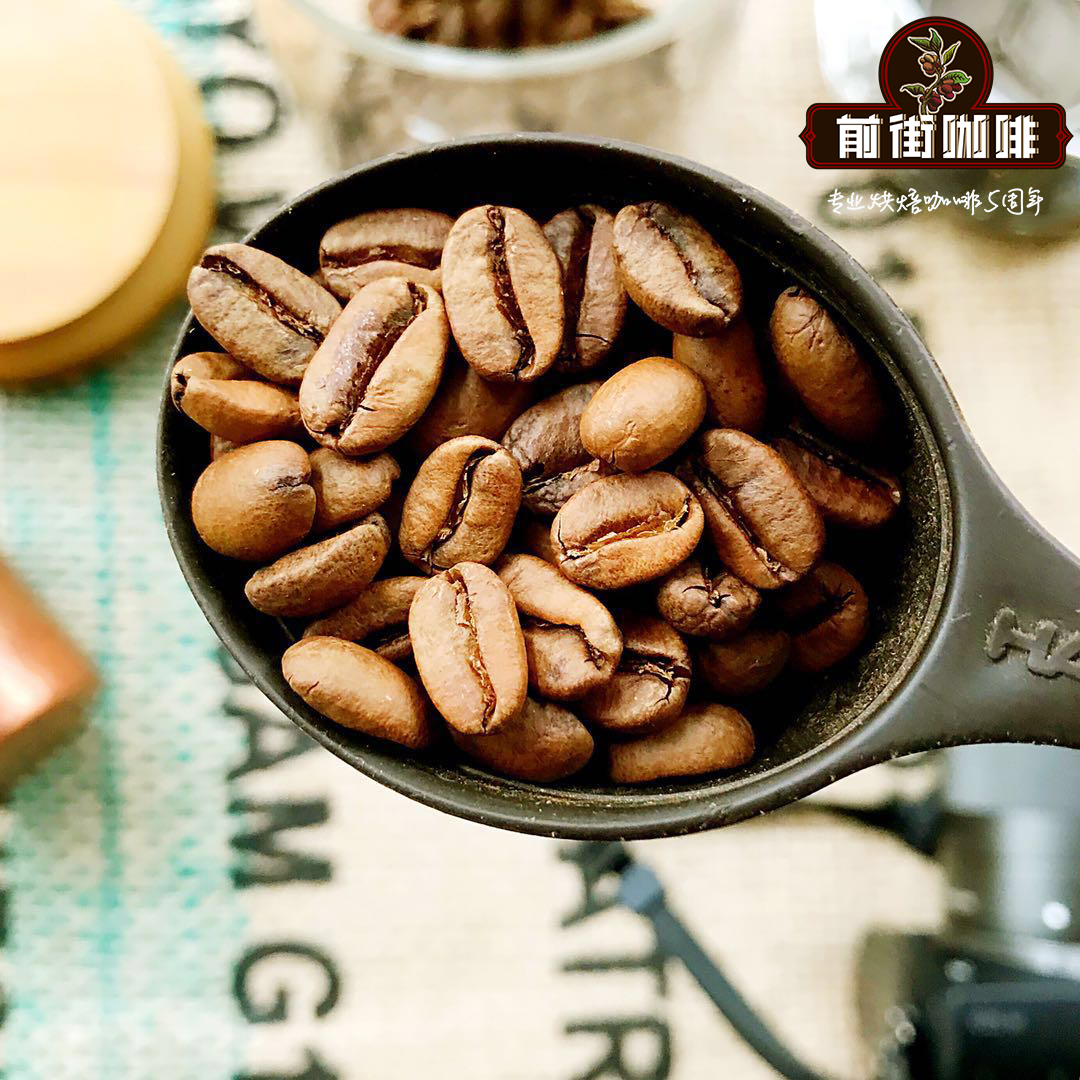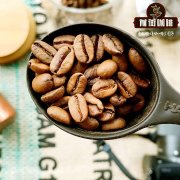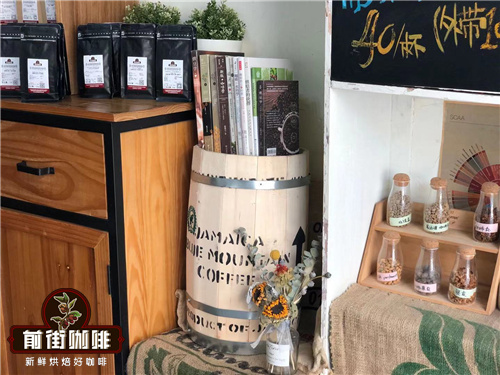Why coffee beans are divided into individual coffee beans and Italian coffee beans? How do you tell the difference?

Professional coffee knowledge exchange more coffee bean information please follow the coffee workshop (Wechat official account cafe_style)
Why is coffee divided into individual coffee beans and Italian coffee beans? How is this distinguished?
Why is there a single item, deep roast and Italian style of coffee? How is this distinguished?
Why do coffee beans have such a long name? Why is there a single item, deep roast and Italian style of coffee? How is this distinguished?
When you walk into a coffee store or open the website of a professional coffee and bean seller, you may be confused by the dazzling variety of coffee names. Why do coffee beans have such a long name? Why is there a single item, deep roast and Italian style of coffee? How is this divided? What does it mean behind these complicated-looking coffee bean names? This article will lead you to understand the meaning of coffee bean names item by item.
1. Indication of origin: "single product" and "comprehensive" coffee
The coffee beans sold in the market can be roughly divided into two categories:
Individual coffee beans (Single Origins)
Blending coffee beans (Coffee Blends)
"single coffee bean" generally refers to a single style of coffee beans from a single country or producing area. It can be compared to a coffee solo. If a bag of coffee is marked with the name of a coffee producing country (coffee beans are not produced in continental Europe, and if the label says the names of European cities such as Italy, Vienna, etc., it is not a single product coffee beans. (generally speaking, it means that this is a bag of individual coffee beans. Such as Ethiopia-Ethiopia Yirgacheffe, Sumatra-Tawar Lake Mantenin (Sumatra Lake Tawar), Guatemala-Antigua (Guatemala Antigua) and so on, the specific coffee produced in specific countries, producing areas and estates is called "single coffee beans". Because each country or different region has its own climate, soil and natural environment, the coffee grown has its own characteristics. Taste "individual coffee beans" to understand the characteristics and flavor of coffee in a country or region.
"blending coffee beans" refers to coffee beans mixed with several individual coffee beans, such as a coffee concerto. The method of blending coffee beans can be simple (such as the traditional "Mamba": Mantenin plus Brazil), or it can be a complex art. Through proper blending, the unique coffee beans can be composed of more harmonious and wonderful movements. Usually, the coffee beans used in espresso (espresso, latte, cappuccino) are blended beans.
two。 Marking of baking degree: deep baking, Nanyi, Beiyi, Vienna, French baking
In addition to the labeling related to the place of origin, the most common is the marking of baking degree. Raw coffee beans need to go through the roasting process to release their unique charming aroma, and the roasting of coffee is closely related to its flavor. If you see "Italy", "Vienna", "Nanyi" and other signs on the coffee label, do not mistakenly think that the coffee beans have anything to do with the above place names-probably not, because traditionally, "Italy" and "Vienna" are synonymous with the degree of roasting (or blending) and do not mean that they are made in Italy or Vienna (as mentioned above). Coffee beans are not grown and produced in Europe. "Beiyi" represents the baking of light, light brown beans without oil; "Nanyi" refers to the deep baking of bright oil and dark brown on the bean surface; and "Italian baking" generally refers to deeper baking. "French baking (French Roast)" generally refers to the extremely deep baking with a near-black color, slightly coke flavor and no acid. "Vienna" usually refers to a mixture of coffee beans with different degrees of roasting.
The deeper the degree of baking, the higher the temperature of the roasting. The medium-shallow "Beiyi" baking flavor is more complex and bright, with fruit-like acidity and little or no bitterness. The deep high-temperature baked "Nanyi" has a low, full-bodied and slippery taste, with a sweet finish like caramel. The flavor of "French baking" is monotonous, but with a slightly coke flavor and no acidity at all.
3. Grading of coffee beans, small producing areas, farms, and other signs
At present, the grading system of coffee beans in the world is not consistent, so you may see the following words on the coffee label: "SHB", "AA+", "Supremo", "Extra-Fancy", "round bean / small bean fruit" and so on. These are the grading names of coffee beans. Baked beans on the market are sometimes marked with the grading of individual coffee beans, usually not.
The best coffee in Central and South America is graded on the basis of planting altitude. Coffee beans above 4500 feet above sea level are marked "SHB". "AA+" is the highest grade of Kenyan coffee. Only batches with particularly excellent flavor and few defects are allowed to be marked "AA+", "AA" is the largest, "AB" is smaller, and "PB" is round beans. Colombia also uses the appearance size and defect rate of coffee beans as grading criteria, with "Supremo" indicating the largest particle. It is worth noting that the appearance size of coffee beans has nothing to do with the flavor. The higher the altitude, the better the flavor.
The name of the country is immediately followed by the marking of small producing areas. Take Ethiopia-Ethiopia (Ethiopia Yirgacheffe) as an example. Ethiopia's Ethiopia is the name of the coffee producing country, indicating that it is a "single product coffee bean". Yega Chefe Yirgacheffe is a long and narrow producing area at high altitude in Ethiopia's Sidamo district. Different small producing areas mean different flavor characteristics. For example, the famous Ethiopia-Haramoka (Ethiopia Harrar) is produced in southern Ethiopia near Somalia. Haramoka has wine-like aromas, blueberry or grape flavors, thick palate, fresh and bright Yega snow coffee, citrus or lemon peel aromas, and a thin palate.
However, some coffee beans have a string of names immediately after the name of the small producing area, which may be the name of a coffee farm or processing plant. The long list of names such as Guatemala-Antigua-Los Mokens (Guatemala Antigua SHB- Finca Los Volcanes 02 Crop) tells us the following information:
Producing country: Guatemala-Guatemala is a famous coffee producer in Central America.
Producing area: Antigua (Antigua)-this is the famous volcanic coffee producing area of the country.
Grading: extremely hard beans (SHB)-indicates that this coffee grows at an altitude of more than 4500 feet.
Production Manor: Finca Los Volcanes Manor-"Finca" is the Spanish word for "Estate", meaning farm.
Harvest year: 2017-the year is for bakers' reference, so the year is usually not marked on the market baked bean label.
In the coffee cooked beans sold in the market, in order to reduce the trouble and identification burden of consumers, they generally do not make such complicated labels. There may be great differences in the flavor of coffee beans in different small producing areas and different years. Professional roasters will taste the coffee beans of the same year in different producing areas every year, and adjust the way of roasting and blending, so that consumers can get products with stable flavor and small differences.
Important Notice :
前街咖啡 FrontStreet Coffee has moved to new addredd:
FrontStreet Coffee Address: 315,Donghua East Road,GuangZhou
Tel:020 38364473
- Prev

Tips on how to judge the freshness of coffee beans according to the five principles of how to buy coffee beans
Professional coffee knowledge exchange more coffee bean information please follow the coffee workshop (Wechat official account cafe_style) single boutique coffee beans _ boutique coffee producing area coffee bean brand _ coffee bean type and classification 1, do not be greedy for small bargains, it is best to buy the amount you can drink within one month from the coffee roasting date, because the freshness of coffee beans is calculated from the time the coffee beans are roasted. Freshly baked coffee
- Next

What do you mean by single coffee beans and Italian coffee beans? can Italian coffee use single coffee beans?
Professional coffee knowledge exchange more coffee bean information please follow the coffee workshop (Wechat official account cafe_style) what are individual coffee beans? Many friends who do not know about it may guess whether it is a single coffee without other ingredients such as milk and chocolate. In fact, this is not the case.
Related
- Guji coffee producing area of Guji, Ethiopia: Humbela, Shakiso, Wulaga
- What is the most expensive variety of Qiloso in BOP multi-variety group?
- How to store the coffee beans bought home?
- Why are Yemeni coffee beans so rare now?
- Ethiopian Sidamo all Red Fruit Sun Sun Santa Vini Coffee beans
- SOE is mostly sour? What does it mean? Is it a single bean? what's the difference between it and Italian blending?
- Is Italian coffee beans suitable for making hand-brewed coffee?
- How to choose coffee beans when making cold coffee? What kind of coffee beans are suitable for making cold coffee?
- Just entered the pit to make coffee, what kind of coffee beans should be chosen?
- Can only Japan buy real Blue Mountain Coffee? What are authentic Jamaican Blue Mountain coffee beans?

